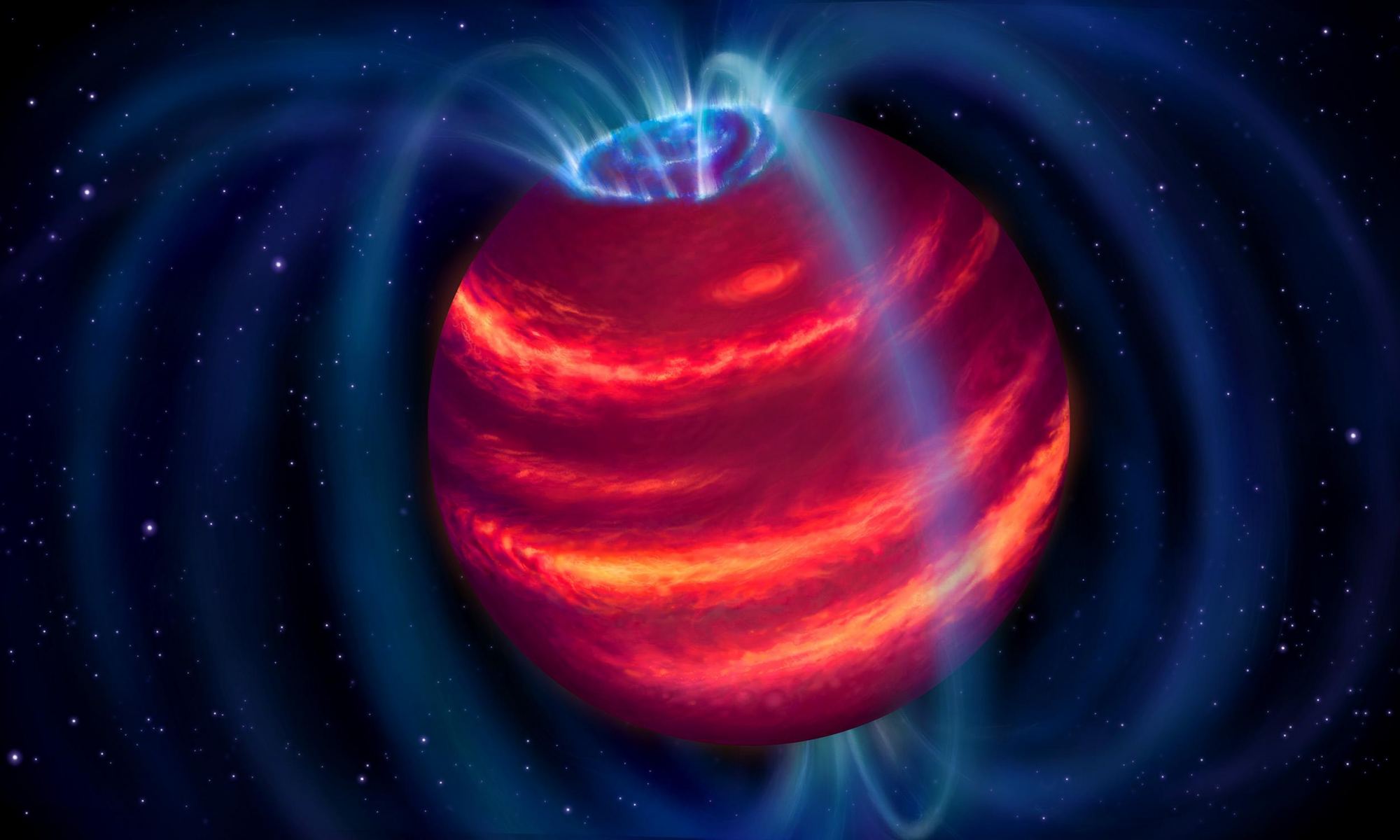Brown dwarfs are interesting objects. They are generally defined as bodies massive enough to trigger the fusion of deuterium or lithium in their cores (and are thus not a planet) but too small to fuse hydrogen in their cores (and therefore not a star). They are the middle children of cosmic bodies.
Continue reading “Brown dwarf discovered with a radio telescope for the first time”Astronomers find 100 brown dwarfs in our neighborhood
![An artist's conception of a brown dwarf. A new study identifies CK Vulpeculae as the remnant of a collison between a brown dwarf and a white dwarf. Image: By NASA/JPL-Caltech (http://planetquest.jpl.nasa.gov/image/114) [Public domain], via Wikimedia Commons](https://www.universetoday.com/wp-content/uploads/2018/10/Artist’s_conception_of_a_brown_dwarf_like_2MASSJ22282889-431026-2000x1200.jpg)
Brown dwarfs are smallish objects sitting somewhere between stars and planets, making them notoriously hard to find. But a recent citizen science project aimed at finding the elusive Planet 9 has instead revealed a treasure trove of these oddities, right next door.
Continue reading “Astronomers find 100 brown dwarfs in our neighborhood”Astronomers Can Actually See the Clouds and Weather on Brown Dwarf 6.5 Light-Years Away
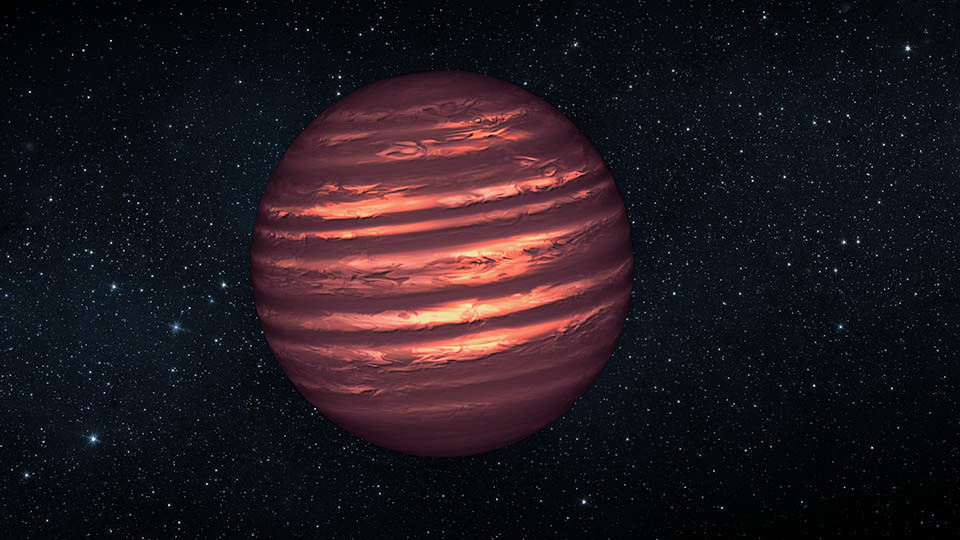
Brown dwarfs are in a tough spot. Not quite a star, not quite a planet, they occupy a place between gas giants and stars. They have more mass than gas giants like Jupiter, but not enough to ignite fusion and become a star.
But astronomers still study them. How could they resist?
Continue reading “Astronomers Can Actually See the Clouds and Weather on Brown Dwarf 6.5 Light-Years Away”Astronomers Measure the Wind Speed on a Brown Dwarf for the First Time. Spoiler: Insanely Fast

In some ways, brown dwarfs are nature’s stellar oddballs. A lot of stars exhibit strange behaviour at different times in their evolution. But brown dwarfs aren’t even certain that they’re stars at all.
But that doesn’t mean astronomers don’t want to study and understand them.
Continue reading “Astronomers Measure the Wind Speed on a Brown Dwarf for the First Time. Spoiler: Insanely Fast”348 Years Ago, a French Astronomer Monk Might have Witnessed the Collision Between a White and Brown Dwarf Star
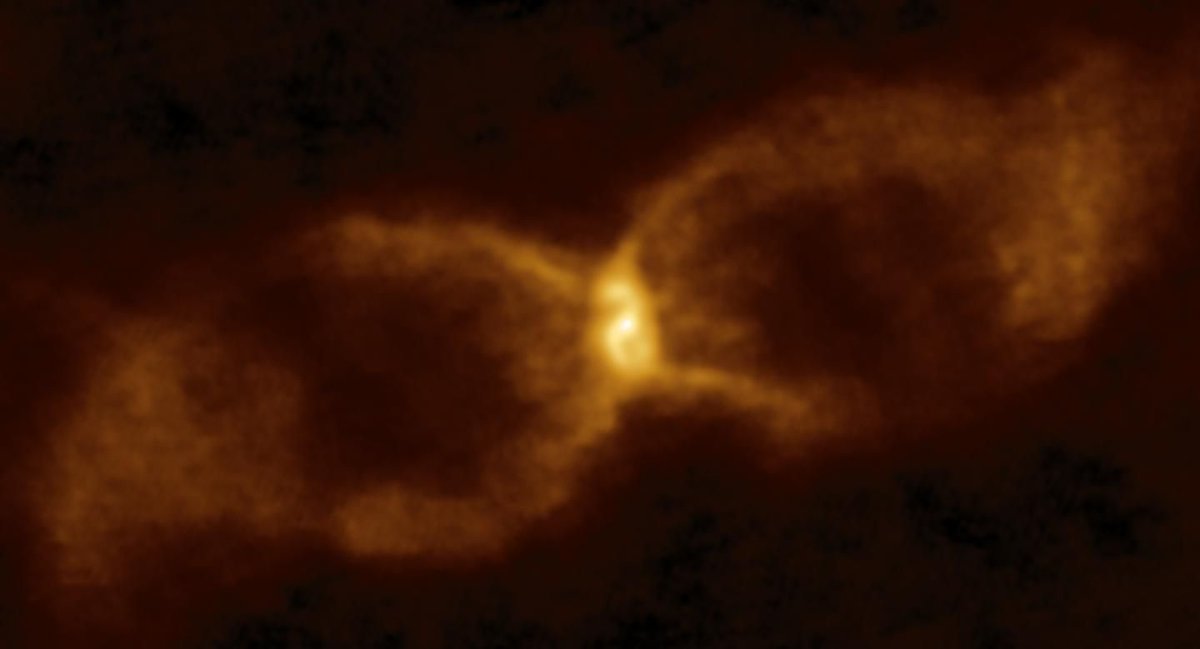
There’s something poignant and haunting about ancient astronomers documenting things in the sky whose nature they could only guess at. It’s true in the case of Père Dom Anthelme, who in 1670 saw a star suddenly burst into view near the head of the constellation Cygnus, the Swan. The object was visible with the naked eye for two years, as it flared in the sky repeatedly. Then it went dark. We call that object CK Vulpeculae.
Astronomers Observe a Pulsar 6500 Light-Years From Earth and See Two Separate Flares Coming off its Surface

Astronomy can be a tricky business, owing to the sheer distances involved. Luckily, astronomers have developed a number of tools and strategies over the years that help them to study distant objects in greater detail. In addition to ground-based and space-based telescopes, there’s also the technique known as gravitational lensing, where the gravity of an intervening object is used to magnify light coming from a more distant object.
Recently, a team of Canadian astronomers used this technique to observe an eclipsing binary millisecond pulsar located about 6500 light years away. According to a study produced by the team, they observed two intense regions of radiation around one star (a brown dwarf) to conduct observations of the other star (a pulsar) – which happened to be the highest resolution observations in astronomical history.
The study, titled “Pulsar emission amplified and resolved by plasma lensing in an eclipsing binary“, recently appeared in the journal Nature. The study was led by Robert Main, a PhD astronomy student at the University of Toronto’s Dunlap Institute for Astronomy & Astrophysics, and included members from the Canadian Institute for Theoretical Astrophysics, the Perimeter Institute for Theoretical Physics, and the Canadian Institute for Advanced Research.
The system they observed is known as the “Black Widow Pulsar”, a binary system that consists of a brown dwarf and a millisecond pulsar orbiting closely to each other. Because of their close proximity to one another, scientists have determined that the pulsar is actively siphoning material from its brown dwarf companion and will eventually consume it. Discovered in 1988, the name “Black Widow” has since come to be applied to other similar binaries.
The observations made by the Canadian team were made possible thanks to the rare geometry and characteristics of the binary – specifically, the “wake” or comet-like tail of gas that extends from the brown dwarf to the pulsar. As Robert Main, the lead author of the paper, explained in a Dunlap Institute press release:
“The gas is acting like a magnifying glass right in front of the pulsar. We are essentially looking at the pulsar through a naturally occurring magnifier which periodically allows us to see the two regions separately.”
Like all pulsars, the “Black Widow” is a rapidly rotating neutron star that spins at a rate of over 600 times a second. As it spins, it emits beams of radiation from its two polar hotspots, which have a strobing effect when observed from a distance. The brown dwarf, meanwhile, is about one third the diameter of the Sun, is located roughly two million km from the pulsar and orbits it once every 9 hours.
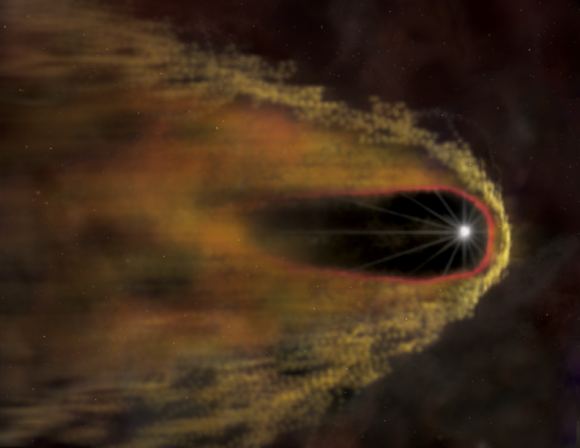
Because they are so close together, the brown dwarf is tidally-locked to the pulsar and is blasted by strong radiation. This intense radiation heats one side of the relatively cool brown dwarf to temperatures of about 6000 °C (10,832 °F), the same temperature as our Sun. Because of the radiation and gases passing between them, the emissions coming from the pulsar interfere with each other, which makes them difficult to study.
However, astronomers have long understood that these same regions could be used as “interstellar lenses” that could localize pulsar emission regions, thus allowing for their study. In the past, astronomers have only been able to resolve emission components marginally. But thanks to the efforts of Main and his colleagues, they were able observing two intense radiation flares located 20 kilometers apart.
In addition to being an unprecedentedly high-resolution observation, the results of this study could provide insight into the nature of the mysterious phenomena known as Fast Radio Bursts (FRBs). As Main explained:
“Many observed properties of FRBs could be explained if they are being amplified by plasma lenses. The properties of the amplified pulses we detected in our study show a remarkable similarity to the bursts from the repeating FRB, suggesting that the repeating FRB may be lensed by plasma in its host galaxy.”
It is an exciting time for astronomers, where improved instruments and methods are not only allowing for more accurate observations, but also providing data that could resolve long-standing mysteries. It seems that every few days, fascinating new discoveries are being made!
Further Reading: University of Toronto, Nature
Where’s the Line Between Massive Planet and Brown Dwarf Star?

When is a Brown Dwarf star not a star at all, but only a mere Gas Giant? And when is a Gas Giant not a planet, but a celestial object more akin to a Brown Dwarf? These questions have bugged astronomers for years, and they go to the heart of a new definition for the large celestial bodies that populate solar systems.
An astronomer at Johns Hopkins University thinks he has a better way of classifying these objects, and it’s not based only on mass, but on the company the objects keep, and how the objects formed. In a paper published in the Astrophysical Journal, Kevin Schlaufman made his case for a new system of classification that could helps us all get past some of the arguments about which object is a gas giant planet or a brown dwarf. Mass is the easy-to-understand part of this new definition, but it’s not the only factor. How the object formed is also key.
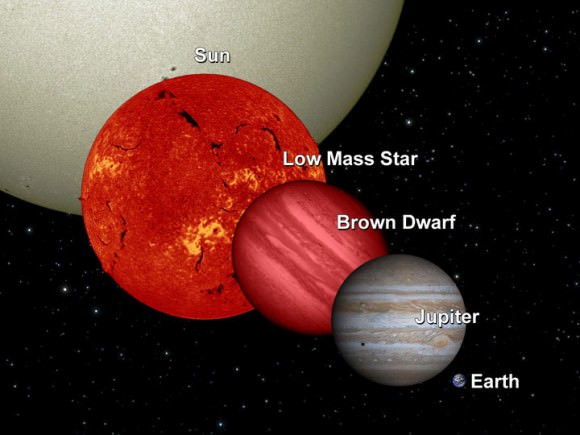
Schlaufman is an assistant professor in the Johns Hopkins Department of Physics and Astronomy. He has set a limit for what we should call a planet, and that limit is between 4 and 10 times the mass of our Solar System’s biggest planet, Jupiter. Above that, you’ve got yourself a Brown Dwarf star. (Brown Dwarfs are also called sub-stellar objects, or failed stars, because they never grew massive enough to become stars.)
“An upper boundary on the masses of planets is one of the most prominent details that was missing.” – Kevin Schlaufman, Johns Hopkins University, Dept. of Physics and Astronomy.
Improvements in observing other solar systems have led to this new definition. Where previously we only had our own Solar System as reference, we now can observe other solar systems with increasing effectiveness. Schlaufman observed 146 solar systems, and that allowed him to fill in some of the blanks in our understanding of brown dwarf and planet formation.
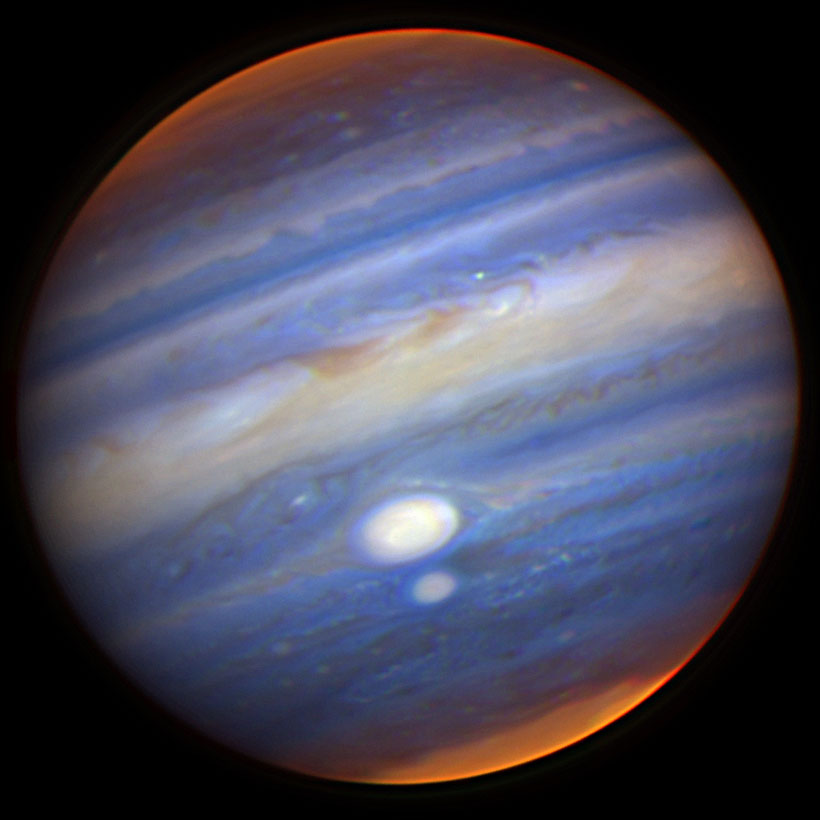
“While we think we know how planets form in a big picture sense, there’s still a lot of detail we need to fill in,” Schlaufman said. “An upper boundary on the masses of planets is one of the most prominent details that was missing.”
Let’s back up a bit and look at how Brown Dwarfs and Gas Giants are related.
Solar systems are formed from clouds of gas and dust. In the early days of a solar system, one or more stars are formed out of this cloud by gravitational collapse. They ignite with fusion and become the stars we see everywhere in the Universe. The leftover gas and dust forms into planets, or brown dwarfs. This is a simplified version of solar system formation, but it serves our purposes.
In our own Solar System, only a single star formed: the Sun. The gas giants Jupiter and Saturn gobbled up most of the rest of the material. Jupiter gobbled up the lion’s share, making it the largest planet. But what if conditions had been different and Jupiter had kept growing? According to Schlaufman, if it had kept growing to over 10 times the size it is now, it would have become a brown dwarf. But that’s not where the new definition ends.
Metallicity and Chemical Makeup
Mass is only part of it. What’s really behind his new classification is the way in which the object formed. This involves the concept of metallicity in stars.
Stars have a metallicity content. In astrophysics, this means the fraction of a star’s mass that is not hydrogen or helium. So any element from lithium on down is considered a metal. These metals are what rocky planets form from. The early Universe had only hydrogen and helium, and almost insignificant amounts of the next two elements, lithium and beryllium. So the first stars had no metallicity, or almost none.
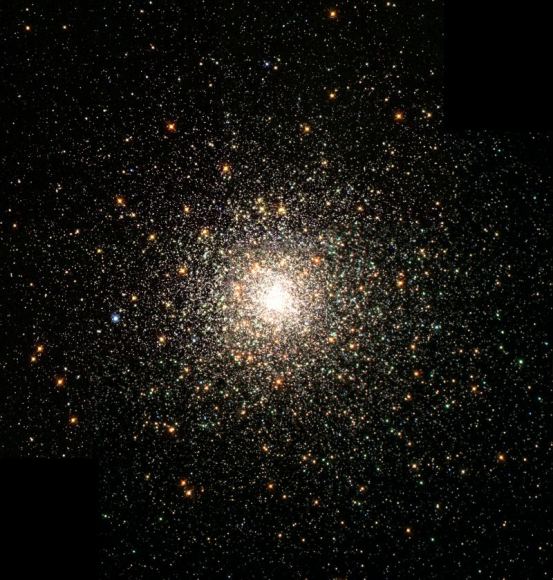
But now, 13.5 billion years after the Big Bang, younger stars like our Sun have more metal in them. That’s because generations of stars have lived and died, and created the metals taken up in subsequent star formation. Our own Sun was formed about 5 billion years ago, and it has the metallicity we expect from a star with its birthdate. It’s still overwhelmingly made of hydrogen and helium, but about 2% of its mass is made of other elements, mostly oxygen, carbon, neon, and iron.
This is where Schlaufman’s study comes in. According to him, we can distinguish between gas giants like Jupiter, and brown dwarfs, by the nature of the star they orbit. The types of planets that form around stars mirror the metallicity of the star itself. Gas giants like Jupiter are usually found orbiting stars with metallicity equal to or greater than our Sun. But brown dwarfs aren’t picky; they form around almost any star. Why?
Brown Dwarfs and Planets Form Differently
Planets like Jupiter are formed by accretion. A rocky core forms, then gas collects around it. Once the process is done, you have a gas giant. For this to happen, you need metals. If metals are present for these rocky cores to form, their presence will be reflected in the metallicity of the host star.
But brown dwarfs aren’t formed by accretion like planets are. They’re formed the same way stars are; by gravitational collapse. They don’t form from an initial rocky core, so metallicity isn’t a factor.
This brings us back to Kevin Schlaufman’s study. He wanted to find out the mass at which point an object doesn’t care about the metallicity of the star they orbit. He concluded that objects above 10 times the mass of Jupiter don’t care if the star has rocky elements, because they don’t form from rocky cores. Hence, they’re not planets akin to Jupiter; they’re brown dwarfs that formed by gravitational collapse.
What Does It Matter What We Call Them?
Let’s look at the Pluto controversy to understand why names are important.
The struggle to accurately classify all the objects we see out there in space is ongoing. Who can forget the plight of poor Pluto? In 2006, the International Astronomical Union (IAU) demoted Pluto, and stripped it of its long-standing status as a planet. Why?
Because the new definition of what a planet is relied on these three criteria:
- a planet is in orbit around a star.
- a planet must have sufficient mass to assume a hydrostatic equilibrium (a nearly round shape.)
- a planet has cleared the neighbourhood around its orbit
The more we looked at Pluto with better telescopes, the more we realized that it did not meet the third criteria, so it was demoted to Dwarf Planet. Sorry Pluto.
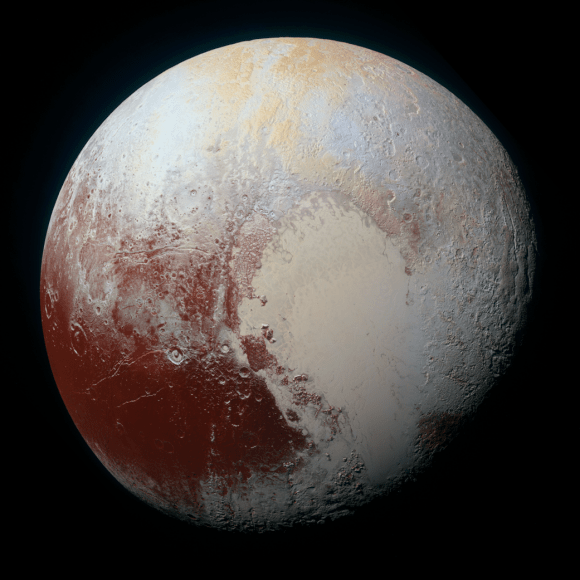
Our naming conventions for astronomical objects are important, because they help people understand how everything fits together. But sometimes the debate over names can get tiresome. (The Pluto debate is starting to wear out its welcome, which is why some suggest we just call them all “worlds.”)
Though the Pluto debate is getting tiresome, it’s still important. We need some way of understanding what makes objects different, and names that reflect that difference. And the names have to reflect something fundamental about the objects in question. Should Pluto really be considered the same type of object as Jupiter? Are both really planets in the same sense? The IAU says no.
The same principle holds true with brown dwarfs and gas giants. Giving them names based solely on their mass doesn’t really tell us much. Schlaufman aims to change that.
His new definition makes sense because it relies on how and where these objects form, not simply their size. But not everyone will agree, of course.
Let the debate begin.
Strange Loner Planet Gets Astronomers’ Attention
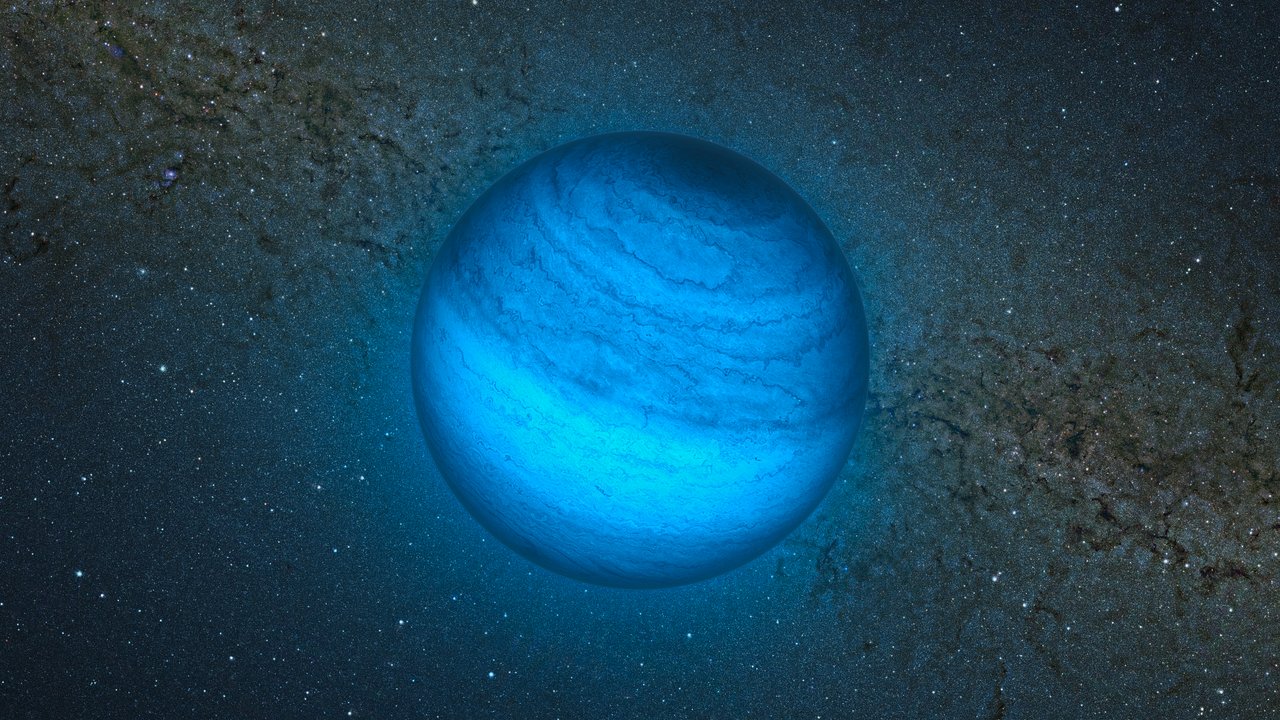
In the hunt for exoplanets, some rather strange discoveries have been made. Beyond our Solar System, astronomers have spotted gas giants and terrestrial planets that appear to be many orders of magnitude larger than what we are used to (aka. “Super-Jupiters” and “Super-Earths”). And in some cases, it has not been entirely clear what our instruments have been detecting.
For instance, in some cases, astronomers have not been sure if an exoplanet candidate was a super-Jupiter or a brown dwarf. Not only do these substellar-mass stars fall into the same temperature range as massive gas giants, they also share many of the same physical properties. Such was the conundrum addressed by an international team of scientists who recently conduced a study of the object known as CFBDSIR 2149-0403.
Located between 117 and 143 light-years from Earth, this mysterious object is what is known as a “free-floating planetary mass object”. It was originally discovered in 2012 by a team of French and Canadian astronomers led by Dr. Phillipe Delorme of the University Grenoble Alpes using the Canada-France Brown Dwarfs Survey – a near infrared sky survey with the Canada-France Hawaii Telescope at Mauna Kea.

The existence of this object was then confirmed using data by the Wide-field Infrared Survey Explorer (WISE), and was believed at the time to be part of a group of stars known as the AB Doradus Moving Group (30 stars that are moving through space). The data collected on this object placed its mass at between 4 and 7 Jupiter masses, its age at 20 to 200 million years, and its surface temperature at about 650-750 K.
This was the first time that such an object had constraints placed upon its mass and age using spectral data. However, questions remained about its true nature – whether it was a low mass, high-metallicity brown dwarf or a isolated planetary mass. For the sake of their study, Delorme and the international team conducted a multi-wavelength, multi-instrument observational characterization of CFBDSIR 2149-0403.
This consisted of x-ray data from the X-Shooter instrument on the ESO’s Very Large Telescope (VLT), near-infrared data from the VLT’s Hawk-1 instrument, and infrared data from the Spitzer Space Telescope and the CFHT’s Wide-field InfraRed Camera (WIRCam). As Delorme told Tomasz Nowakowski of Phys.org:
“The X-Shooter data enabled a detailed study of the physical properties of this object. However, all the data presented in the paper is really necessary for the study, especially the follow-up to obtain the parallax of the object, as well as the Spitzer photometry. Together, they enable us to get the bolometric flux of the object, and hence constraints that are almost independent from atmosphere model assumptions.”
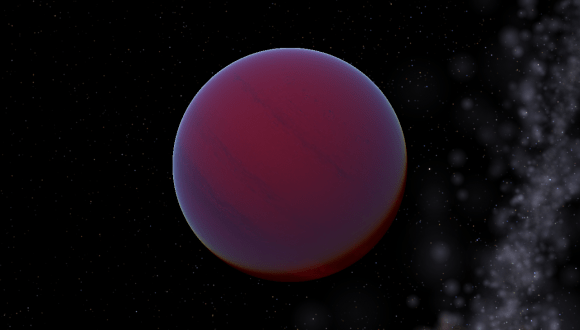
From the combined data, they were able to characterize the absolute flux of the CFBDSIR 2149-0403, obtain readings on its spectrum, and even determine the radial velocity of the object. They were therefore able to determine that it not likely a member of a moving population of stars, as was previously expected.
As for what it is, they narrowed that down to one of two possibilities. Basically, it could be a planetary-mass object with a mass of between 2 and 13 Jupiters that is less than 500 million years in age, or a high metallicity brown dwarf that is between 2 and 40 Jupiter masses and two to three billion years in age. Ultimately, they acknowledge that this uncertainty is due to the fact that our theoretical understanding of cool, low-gravity, and metallicity-enhanced bodies is not robust enough yet.
Much of this has to do with the fact that brown dwarfs and super gas giants have common physical parameters that produce very similar effects in the spectra of their atmospheres. But as astronomers gain more of an understanding of planetary formation, which is made possible by the discovery of so many extra-solar planetary systems, we might just find where the line between the smallest of stars and the largest of gas giants is drawn.
First Detection of Water Clouds Outside Our Solar System
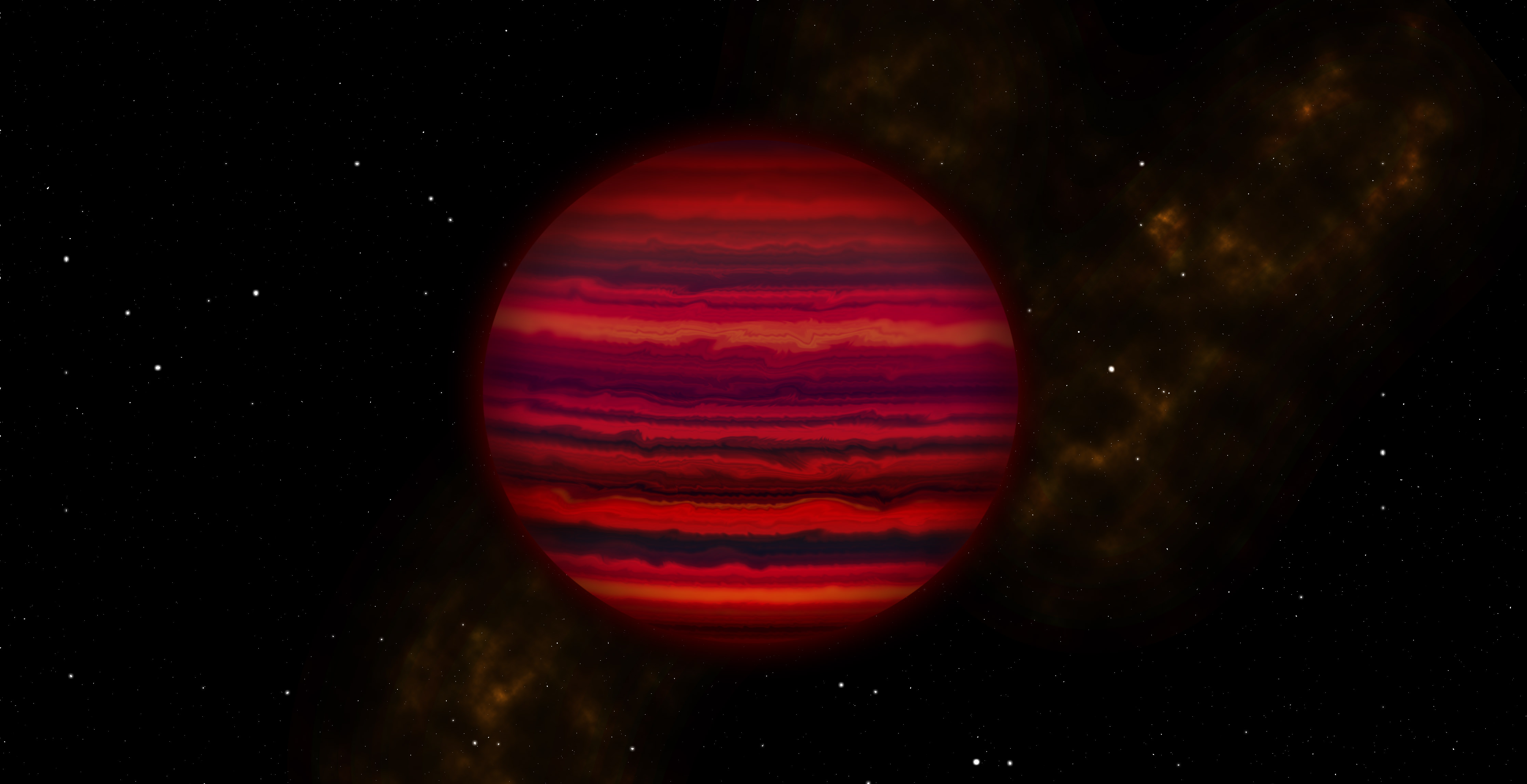
Brown dwarfs – those not-quite-a-planet and not-quite-a-star objects – are intriguing oddities that are too low in mass to burn hydrogen, but are more massive than planets. They only emit a faint amount of light, so they are hard to detect, making scientists unsure of how many of them might be out there in our galaxy.
But astronomers have been keeping an eye one particular brown dwarf known called WISE 0855. Just 7.2 light-years from Earth, it is the coldest known object outside of our Solar System and is just barely visible at infrared wavelengths. But with some crafty spectroscopic observing techniques, astronomers have now determined this object has some exciting characteristics: its atmosphere is full of clouds of water vapor. This is the first time water clouds have been detected outside of our Solar System.
“It’s five times fainter than any other object detected with ground-based spectroscopy at this wavelength,” said Andrew Skemer, assistant professor of astronomy and astrophysics at UC Santa Cruz and the first author on a paper on WISE 0855 published in Astrophysical Journal Letters (paper is available on arXiv here). “Now that we have a spectrum, we can really start thinking about what’s going on in this object. Our spectrum shows that WISE 0855 is dominated by water vapor and clouds, with an overall appearance that is strikingly similar to Jupiter.”
This brown dwarf’s full name is WISE J085510.83-071442.5, but we’re among friends, so it’s W0855 for short. It has about five times the mass of Jupiter and is the coldest brown dwarf ever detected, with an average temperature of about 250 degrees Kelvin, or minus 10 degrees F, minus 20 C. That makes it nearly as cold as Jupiter, which is 130 degrees Kelvin.
“WISE 0855 is our first opportunity to study an extrasolar planetary-mass object that is nearly as cold as our own gas giants,” Skemer said.
Skemer and his team used the Gemini-North telescope in Hawaii and the Gemini Near Infrared Spectrograph to observe WISE 0855 over 13 nights for a total of about 14 hours. Skemer was part of a team that studied this object in 2014 found tentative indications of water clouds based on very limited photometric data. Skemer said obtaining a spectrum (which separates the light from an object into its component wavelengths) was the only way to detect this object’s molecular composition.
A video about the 2014 discovery and study of WISE 0855:
WISE 0855 is too faint for conventional spectroscopy at optical or near-infrared wavelengths, but the team took up a challenge and looked at the thermal emissions from the object at wavelengths in a narrow window around 5 microns.
“I think everyone on the research team really believed that we were dreaming to think we could obtain a spectrum of this brown dwarf because its thermal glow is so feeble,” said Skemer. WISE 0855, is so cool and faint that many astronomers thought it would be years before a spectrum could be obtained. “I thought we’d have to wait until the James Webb Space Telescope was operating to do this,” Skemer said.
This spectroscopic view provided a glimpse into the environment of WISE 0855’s atmosphere. With the data in hand, the researchers then developed atmospheric models of the equilibrium chemistry for a brown dwarf at 250 degrees Kelvin and calculated the resulting spectra under different assumptions, including cloudy and cloud-free models. The models predicted a spectrum dominated by features resulting from water vapor, and the cloudy model yielded the best fit to the features in the spectrum of WISE 0855.
While the spectra of this object are strikingly similar to Jupiter, WISE 0855 appears to have a less turbulent atmosphere.
“The spectrum allows us to investigate dynamical and chemical properties that have long been studied in Jupiter’s atmosphere, but this time on an extrasolar world,” Skemer said.
The scientists say WISE 0855 looks more similar to Jupiter than any exoplanet yet discovered, which is especially intriguing since the Juno mission has just begun its exploration at the giant world. Jupiter, along with the other gas planets in our Solar System, all have clouds and storms, although Jupiter’s clouds are mainly made of ammonia with lower level clouds perhaps containing water. One of Juno’s goals is to determine the global water abundance at Jupiter.
Sources: UC Santa Cruz, Gemini
Hubble Directly Measures Rotation of Cloudy ‘Super-Jupiter’

Astronomers using the Hubble Space Telescope have measured the rotation rate of an extreme exoplanet 2M1207b by observing the varied brightness in its atmosphere. This is the first measurement of the rotation of a massive exoplanet using direct imaging.
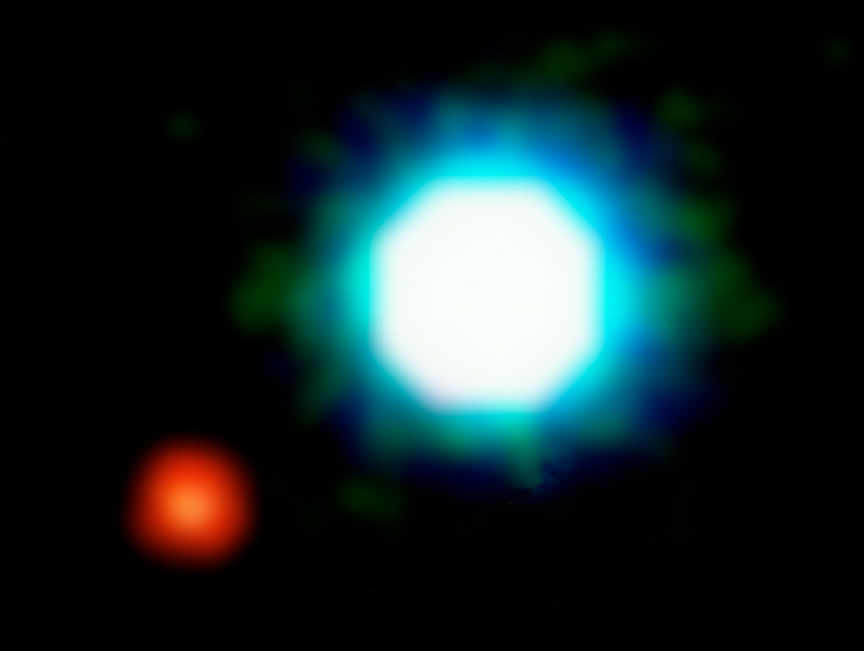
Little by little we’re coming to know at least some of the 2,085 exoplanets discovered to date more intimately despite their great distances and proximity to the blinding light of their host stars. 2M1207b is about four times more massive than Jupiter and dubbed a “super-Jupiter”. Super-Jupiters fill the gap between Jupiter-mass planets and brown dwarf stars. They can be up to 80 times more massive than Jupiter yet remain nearly the same size as that planet because gravity compresses the material into an ever denser, more compact sphere.
2M1207b lies 170 light years from Earth and orbits a brown dwarf at a distance of 5 billion miles. By contrast, Jupiter is approximately 500 million miles from the sun. You’ll often hear brown dwarfs described as “failed stars” because they’re not massive enough for hydrogen fusion to fire up in their cores the way it does in our sun and all the rest of the main sequence stars.
Researchers used Hubble’s exquisite resolution to precisely measure the planet’s brightness changes as it spins and nailed the rotation rate at 10 hours, virtually identical to Jupiter’s. While it’s fascinating to know a planet’s spin, there’s more to this extraordinary exoplanet. Hubble data confirmed the rotation but also showed the presence of patchy, “colorless” (white presumably) cloud layers. While perhaps ordinary in appearance, the composition of the clouds is anything but.
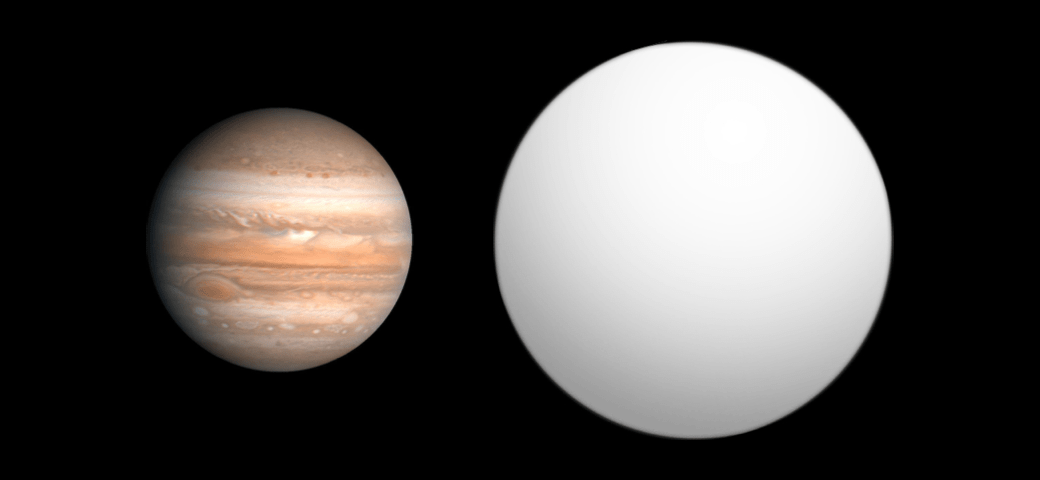
The planet appears bright in infrared light because it’s young (about 10 million years old) and still contracting, releasing gravitational potential energy that heats it from the inside out. All that extra heat makes 2M1207b’s atmosphere hot enough to form “rain” clouds made of vaporized rock. The rock cools down to form tiny particles with sizes similar to those in cigarette smoke. Deeper into the atmosphere, iron droplets are forming and falling like rain, eventually evaporating as they enter the lower levels of the atmosphere.
“So at higher altitudes it rains glass, and at lower altitudes it rains iron,” said Yifan Zhou of the University of Arizona, lead author on the research paper in a recent Astrophysical Journal. “The atmospheric temperatures are between about 2,200 to 2,600 degrees Fahrenheit.” Every day’s a scorcher on 2M1207b.
Both Jupiter and Saturn also emit more heat than they receive from the sun because they too are still contracting despite being 450 times older. The bigger you are, the slower you chill.
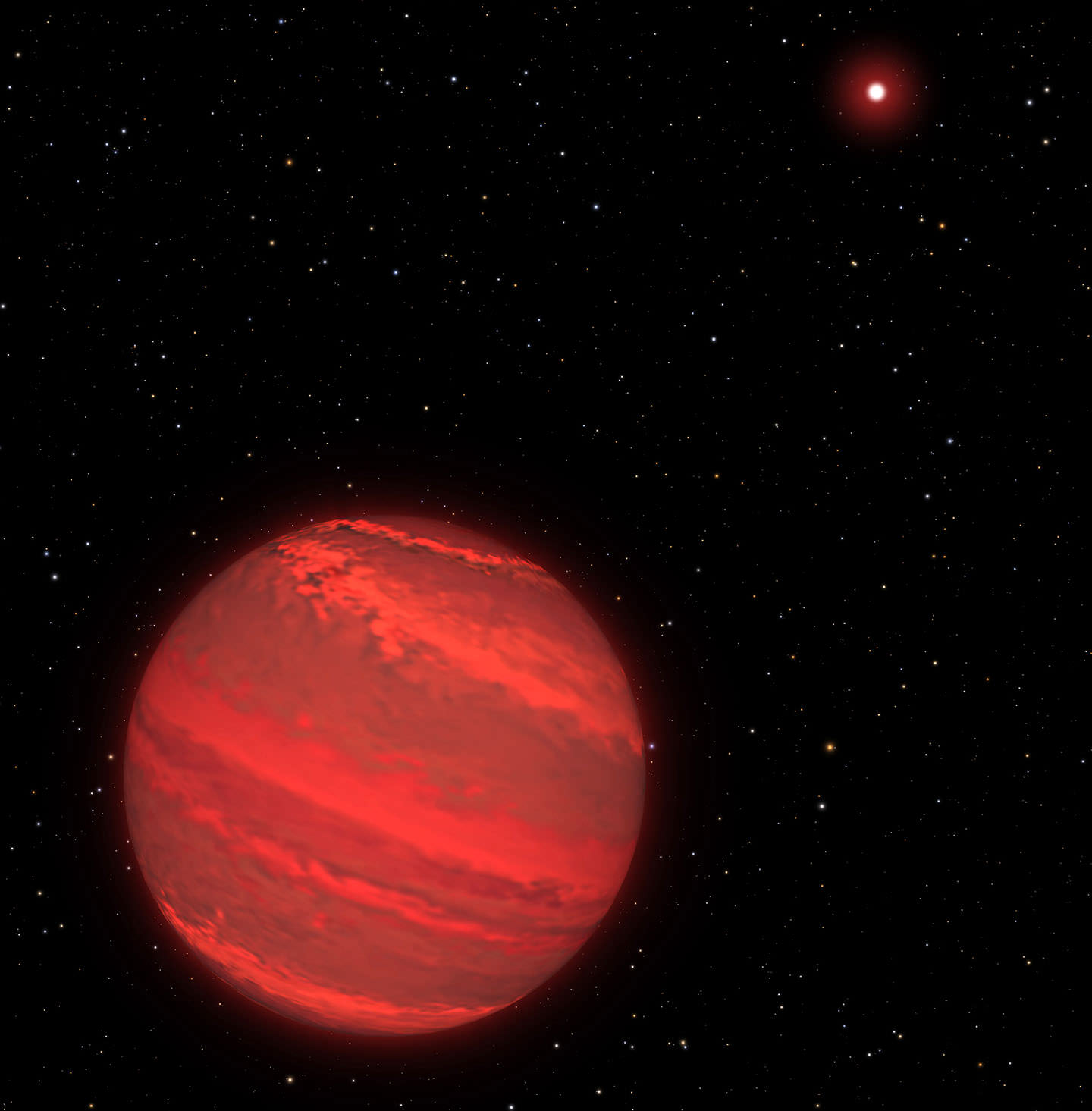
All the planets in our Solar System possess only a fraction of the mass of the Sun. Even mighty Jove is a thousand times less massive. But Mr. Super-Jupiter’s a heavyweight compared to its brown dwarf host, being just 5-7 times less massive. While Jupiter and the rest of the planets formed by the accretion of dust and rocks within a clumpy disk of material surrounding the early Sun, it’s thought 2M1207b and its companion may have formed throughout the gravitational collapse of a pair of separate disks.
This super-Jupiter will an ideal target for the James Webb Space Telescope, a space observatory optimized for the infrared scheduled to launch in 2018. With its much larger mirror — 21-feet (6.5-meters) — Webb will help astronomers better determine the exoplanet’s atmospheric composition and created more detailed maps from brightness changes.
Teasing out the details of 2M1207b’s atmosphere and rotation introduces us to a most alien world the likes of which never evolved in our own Solar System. I feel like I’m aboard the Starship Enterprise visiting far-flung worlds. Only this is better. It’s real.

